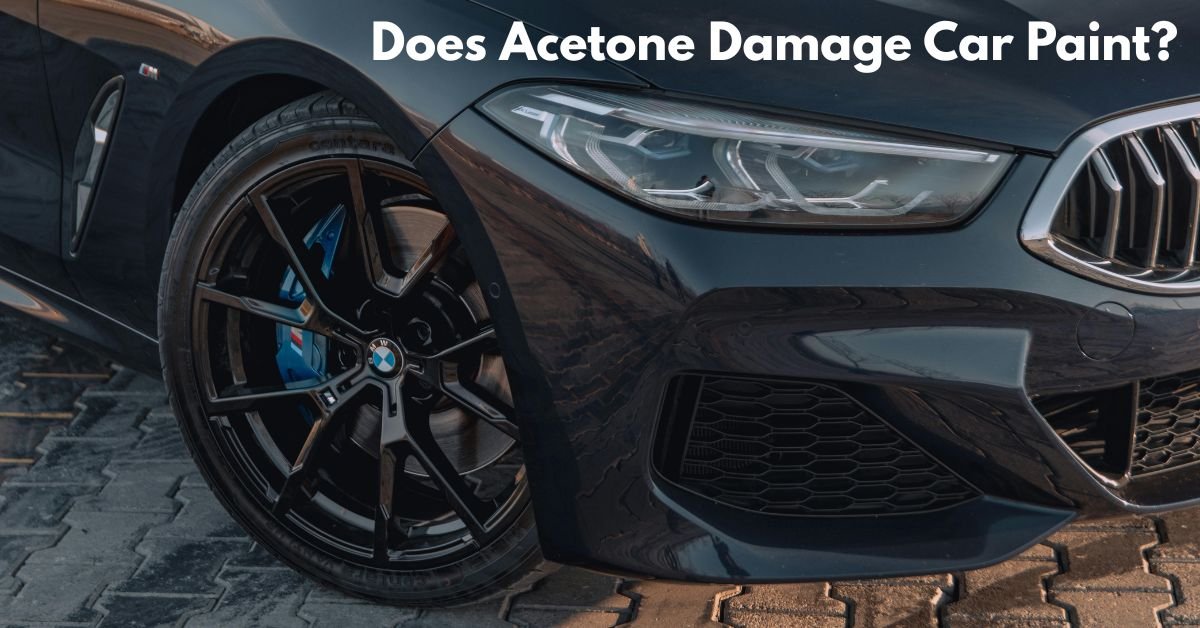When it comes to maintaining the appearance of your car, there’s no shortage of products and chemicals that can be used to clean, restore, or remove stubborn substances. One chemical that frequently comes up in discussions is acetone, a common solvent found in many household products like nail polish remover, paint thinners, and cleaning agents. While it’s often used for various cleaning purposes, there are concerns about its potential effects on car paint. So, does acetone damage car paint? Let’s break it down.
Does Acetone Damage Car Paint?
What is Acetone?
Acetone has a strong, sweet smell and is a colorless, volatile solvent. It is commonly used in the cosmetics and industrial sectors as a solvent for cleaning and thinning substances like paints, varnishes, adhesives, and nail polishes. It is highly effective at breaking down oils, resins, and other organic materials. But, when it comes to car paint, this strong solvent can potentially cause some issues if not handled properly.
How Acetone Affects Car Paint
Car paint is generally composed of multiple layers, including a base coat, color coat, and clear coat. The clear coat is a protective layer that helps to preserve the color and finish of the paint, giving your car that glossy shine. Acetone is a powerful solvent that can break down these layers, especially the clear coat, which is the most vulnerable to chemical damage.
- Clear Coat Damage: Acetone can strip the protective clear coat off your car’s paint, leaving the underlying color coat exposed. This exposes the paint to the elements, such as UV rays, moisture, and pollutants, which can lead to fading, oxidation, and deterioration over time.
- Discoloration: Because acetone is a solvent, it can also cause discoloration to the paint surface. If acetone is left on the paint for too long, it can result in an uneven, blotchy appearance. This is especially true if the paint is older or has already been damaged, as the solvent can accelerate the degradation process.
- Surface Etching: In some cases, acetone can cause etching on the surface of the car’s paint. This happens when the solvent is left in contact with the paint for too long, eating into the surface and creating visible marks that are difficult to remove.
- Potential for Fading: Over time, repeated exposure to acetone can lead to the paint losing its vibrancy, causing it to fade more quickly than normal. This is especially true for cars with lighter colors, as acetone can remove the layer of protective wax or sealant that helps maintain the paint’s luster.
Must Read: Do Electric Cars Have Catalytic Converters?

When is Acetone Safe to Use on Car Paint?
Despite its potential to damage car paint, acetone can be used safely in certain situations with proper care and caution. For example:
- Spot Cleaning: If you need to remove stubborn substances like tree sap, tar, or glue, acetone can be effective. However, it’s essential to use it sparingly and avoid letting it sit on the paint for extended periods. A soft cloth or cotton ball soaked in acetone can help remove the substance without causing damage.
- Test First: Always test acetone on a small, inconspicuous area of your car before applying it to larger surfaces. This will help you gauge how the paint reacts and prevent accidental damage.
- Quick Application: If you do use acetone, apply it quickly and wipe it off immediately. The less time it spends on your car’s paint, the less likely it is to cause damage.
Alternatives to Acetone for Car Paint
If you’re concerned about the potential risks of using acetone on your car, there are several alternatives that are safer for car paint:
- Isopropyl Alcohol: Isopropyl alcohol (rubbing alcohol) is a milder solvent that can be used to remove certain substances from your car’s surface without causing damage to the paint. It is effective for removing wax, grease, and oil, making it a safer choice for routine cleaning.
- Dedicated Automotive Products: There are several automotive-specific cleaning products designed to remove sticky residues and contaminants without harming the paint. Products like bug and tar removers or adhesive removers are formulated to be safe for car surfaces and can provide the same results as acetone without the risks.
- Clay Bar Treatment: For a deeper clean, a clay bar treatment can help remove contaminants from your car’s paint. It’s a gentle process that doesn’t require harsh chemicals and can leave your car looking smooth and shiny.
Conclusion
Acetone can damage car paint if not used with caution, especially by stripping the protective clear coat or causing discoloration and fading. While acetone may be useful for removing certain substances, it’s essential to use it carefully and sparingly to avoid long-term damage. If you’re unsure, it’s always best to opt for safer alternatives, such as isopropyl alcohol or automotive-specific cleaning products.
The key takeaway is that when it comes to car paint, a little caution goes a long way. Taking the time to carefully choose the right cleaning agents and methods will help keep your vehicle looking its best for years to come.
